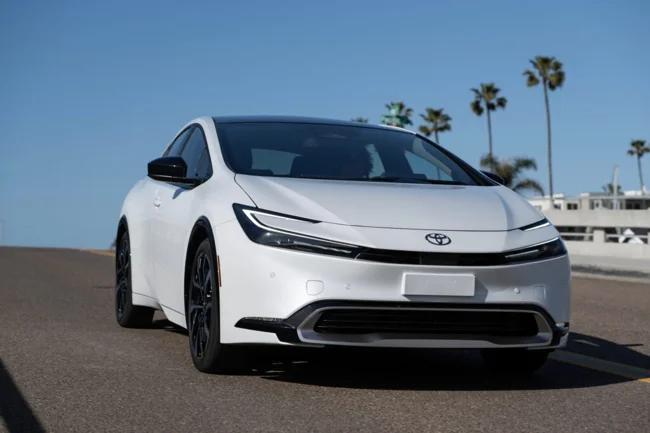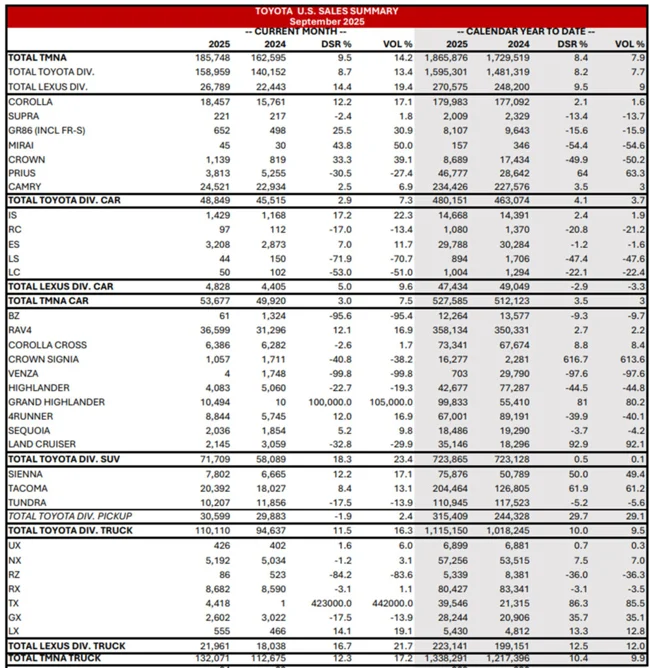Sales of the Toyota Prius and Land Cruiser showed disastrous results in September (4 photos) (photo)

Toyota Sales Overview
Toyota and Lexus sold 136,357 more vehicles in the U.S. in the first nine months of this year than in the same period last year. While many of the brand’s popular models showed strong growth, two key Toyota models suffered significant sales declines in September.
Key Model Sales Drop
Let’s start with the negatives: Demand for the Toyota Prius and Toyota Land Cruiser fell sharply in September. Local Prius sales fell 27.4%, from 5,255 to 3,813 units. Interestingly, Prius sales have remained positive year-to-date, showing a significant 63.3% year-over-year increase. At least 46,777 of the model were sold in the US in 2025.
Toyota Sold Just 18 EVs In Japan Last Month
The Land Cruiser was also a notable exception in September. Its sales fell 29.9% to 2,145 units, down from 3,059. However, like the Prius, sales have increased 92.1% year-to-date to 35,146 units, down from 18,296 last year. In addition, Supra sales fell 2.1% in September, BZ models fell 95.4%, and Crown Signia deliveries fell 40.8%. 
Overall growth and dynamics of Lexus
Despite the mixed results, total sales of Toyota models increased by 13.4% to 158,959 units, while Lexus sales increased by 19.4% to 26,789. Together, Toyota and Lexus sold 185,748 vehicles in September, which is 14.2% more than last year. This allowed to increase the total sales volume since the beginning of the year to 1,865,876 units, which is 7.9% higher than in the first three quarters of 2024.
Interestingly, demand for traditional Lexus cars has been gradually declining. Passenger car sales have fallen 3.3% this year to 47,434 units, although September saw a slight improvement, with sales up 9.6%. This category includes the IS, RC, ES, LS and LC models. Lexus SUV sales, on the other hand, rose 12% to 223,141 units, driven in part by an 85.5% increase in demand for the TX and a 35.1% increase in demand for the GX. 

Overall, Toyota’s U.S. sales performance remains stable, despite temporary model-specific challenges. The rise in SUVs, particularly under the Lexus brand, may indicate a shift in consumer preferences in the market. Meanwhile, the significant decline in electric and hybrid models, such as the BZ, may be due to a general trend toward slower adoption of electric vehicles in some regions. This may require the company to adjust its marketing strategy and focus in future collections.





















